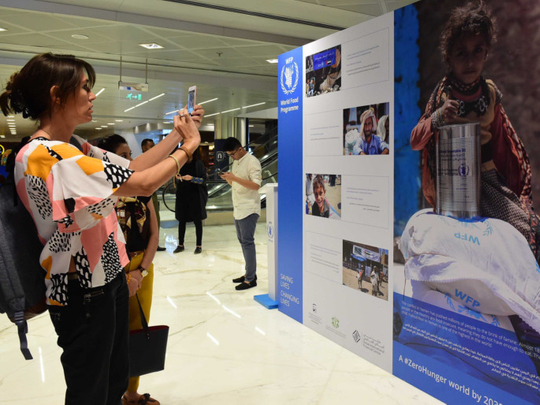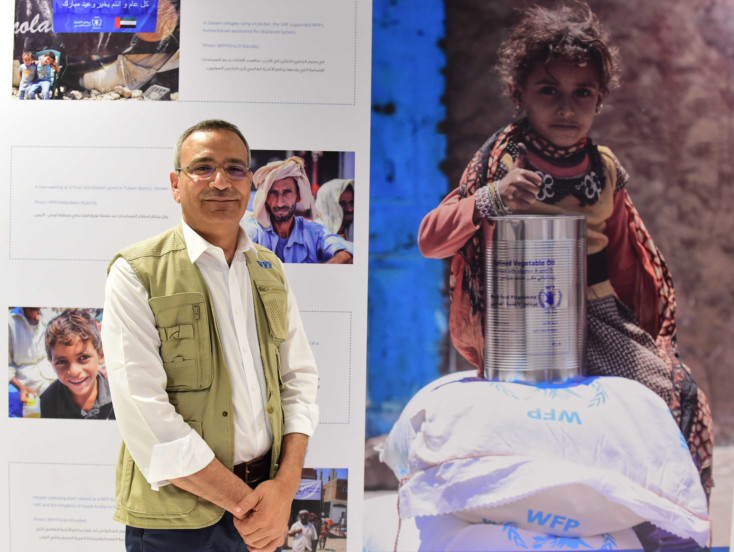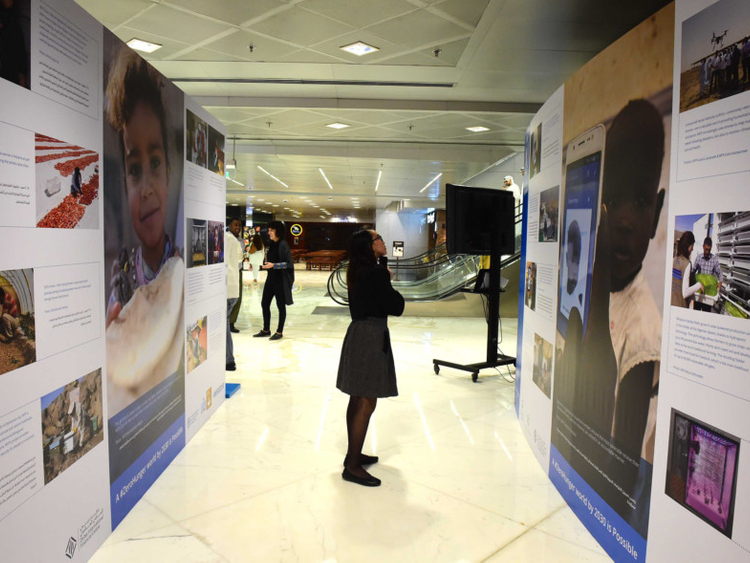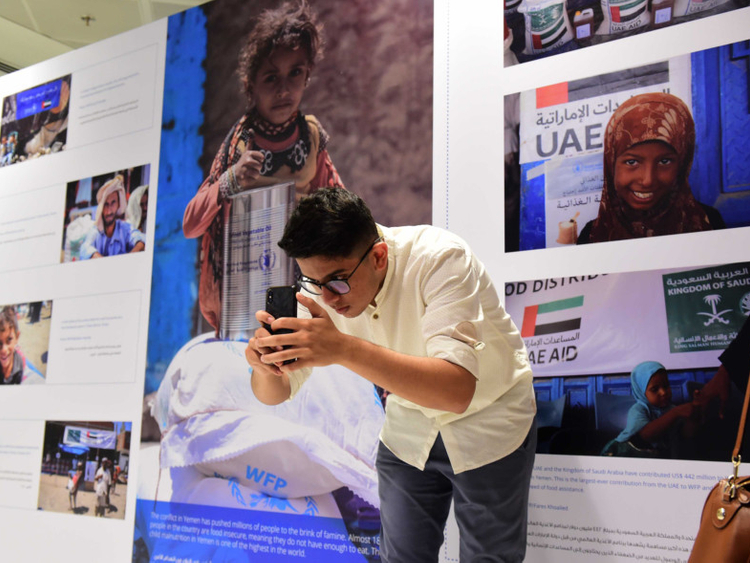
Dubai: Today, one in nine people around the globe go to bed hungry.
To mark ‘World Food Day,’ the World Food Programme (WFP) held a photo exhibition at the Dubai International Financial Centre (DIFC), to raise awareness about world hunger — a daily reality that affects 821 million worldwide.
The event encourages residents in the UAE to contribute to ending world hunger by simply downloading a smartphone fund-raising app — ‘Share the Meal’ — which enables people to feed a child by donating 50 cents a day.
Abdel Mageed Yahia, Director of WFP UAE and Representative to GCC region, talked to Gulf News about the steps needed to achieve one of the UN’s main Sustainable Development Goals.
“Is it possible to end hunger by 2030? Today, I would say it is possible,” said Yahia.
He pointed out that while hunger leads to conflict, unrest, instability, migration and displacement of populations, armed conflicts remain one of the major causes of growing hunger in our world today.
“Hunger and armed conflict are very much interlinked, the more conflict we see, the higher the cost needed to feed people. The world produces more than it needs in terms of food, but does it reach those in need?” he said.
Over 60 per cent of the people reached by the WFP are those affected by hunger due to armed conflicts. “This means we feed them to save their lives,” said Yahia.
He explained that by achieving food security, we can eliminate other world problems such as hunger, conflict, child labour, and early marriage.
“While progress was made in eliminating hunger in the last 25 years, the past six years have shown a reverse effect. In the late 90s, around 900 million people around the world suffered from hunger, which then decreased to 800 million.
“Now, this number is on the rise again,” said Yahia.
Development
To achieve zero hunger by 2030 — Yahia pointed out the need for development, which starts with education.
“The reason some people don’t send their children to school is because of hunger and poverty. Families pull their children out of school so they can work to enable them to secure a meal,” he explained.
To help resolve this dilemma, the WFP is providing school meals to encourage families to send their children to school. “We are supporting over 400 million children through school meals, which cost 50 cents a day to feed a child at school,” said Yahia.
UAE contributions
While the UAE is one the programme’s biggest donors, 2018 witnessed their largest contribution to the WFP’s operations in Yemen with over $200 million in donations. Other contributions were also made to Syrian refugees in Jordan, Lebanon and displaced populations in Syria.
“When there is a conflict or natural disaster where there is an immediate need for food, airplanes are made available to us at the International Humanitarian City (IHC) where we are able to directly ship food to these locations,” said Yahia.
The IHC, chaired by Princess Haya Bint Al Hussain, hosts WFP’s warehousing facilities in Dubai and is WFP’s largest humanitarian logistics hub.
Facts
■ The WFP UAE can reach one-third of its 80 million beneficiaries within three hours and two-thirds within seven hours from Dubai
■ In the last decade, WFP has received more than $1.3 billion (Dh4.77 billion) from GCC countries
■ In 2017, WFP UAE procured goods and services on behalf of the humanitarian community for a value of almost $28 million
■ In 2017, 60 per cent of all the United Nations Humanitarian Response Depot (UNHRD) transports originated from the Dubai hub
■ A total of 4,332 metric tonnes (mt) of humanitarian supplies were dispatched to 77 countries via 344 shipments, on behalf of 25 partners.











